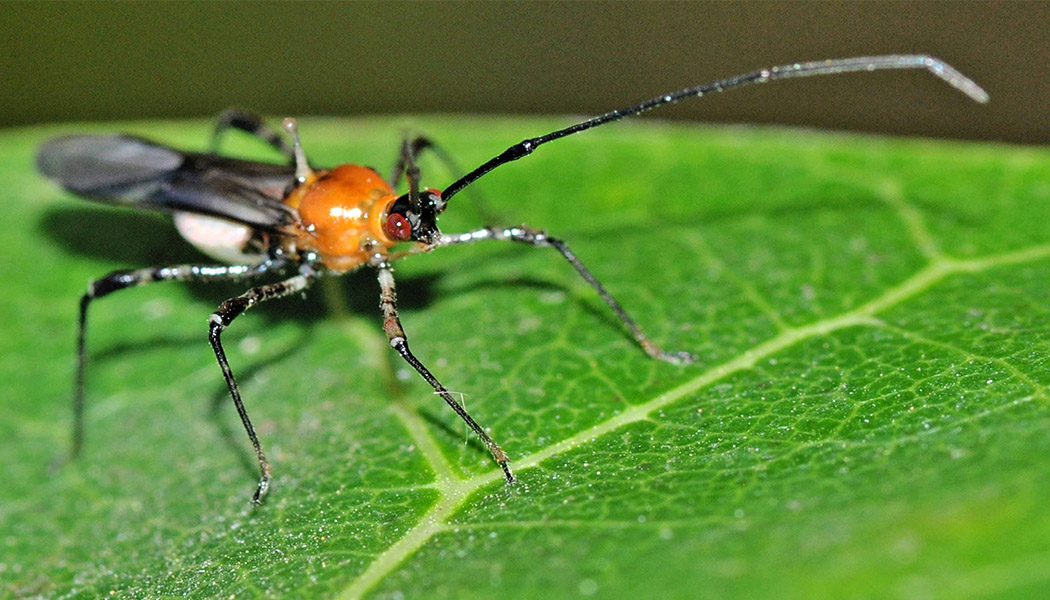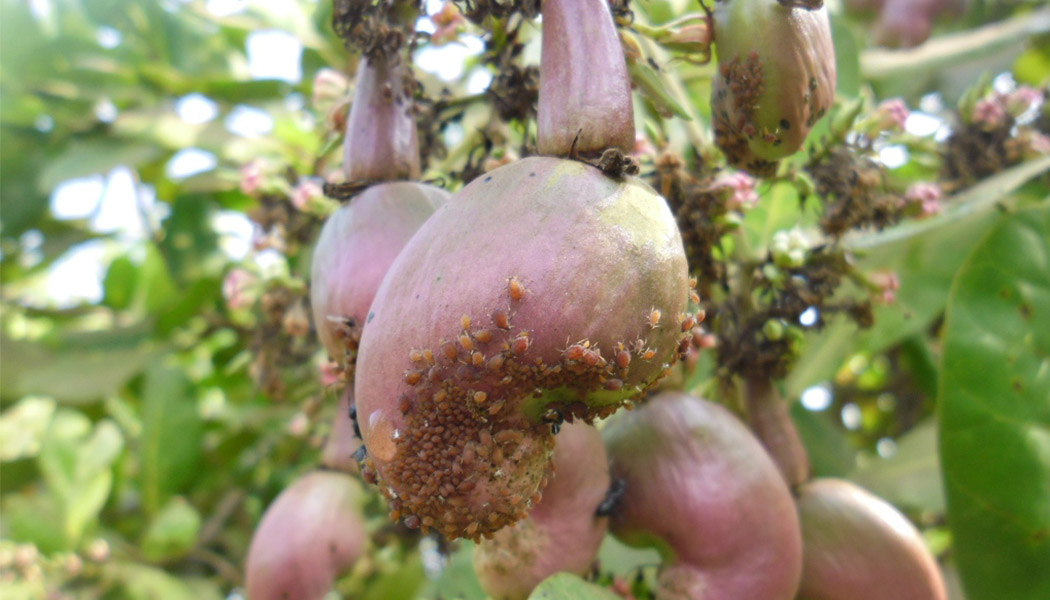Cashew plantations are rich in biodiversity and globally, more than 300 species of arthropods are known to infest cashew till now. Depending on the climate, location and age of the plantation, each geographic region may have its own distinctive pest complex. Due to pests 10 - 50 % yield loss may occur, if management measures are not properly taken up.
Among the pests, tea mosquito bug and cashew stem and root borer are the two major pests in almost all cashew growing regions of India and across the world. There are other secondary and minor pests which cause damage occasionally. Some secondary pests include leaf miner, shoot tip caterpillar, leaf and flower thrips, leaf and blossom Webbers, apple and nut borer, flower caterpillar and mealy bugs. These pests are of regional importance and cause damage depending on the favourable weather factors. Natural enemies help to bring down their population to a greater extent even up to 50 %, and the insecticidal sprays taken up for TMB management also reduces the population of these pests.

Minor pests include leaf beetles, leaf weevils, shoot webbers, aphids etc, which do not cause economic damage. Removal and destruction of infested plant parts helps to minimize further infestation and spread. There are several predators like spiders, syrphids, coccinellids, lace wing bugs, anthocorid bugs, reduviids, praying mantids, mantispid flies, predatory pentatomid bugs etc manage minor pests to a greater extent.
Besides, species specific parasitoids present in nature help in minimizing population of several minor pests. The knowledge on insect pests, season of occurrence, symptoms of damage and management measures are important to get good harvest (For more information please visit https://cashew.icar.gov.in/pestsite/ or https://play.google.com/store/apps/details?id=com.townhub.pestmanagement.mobile)
